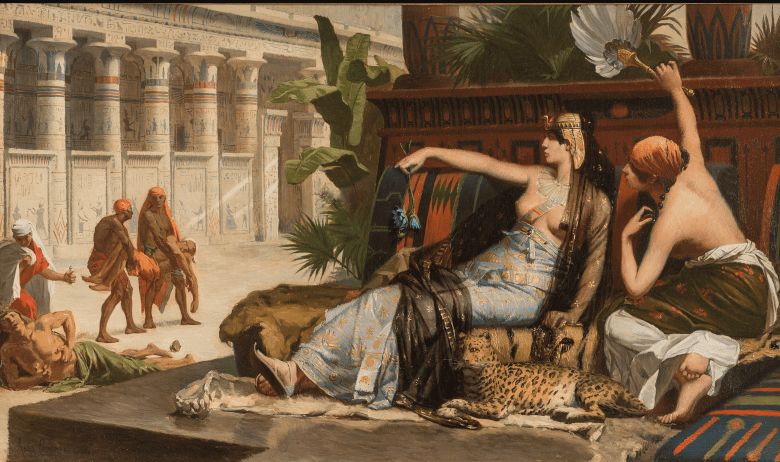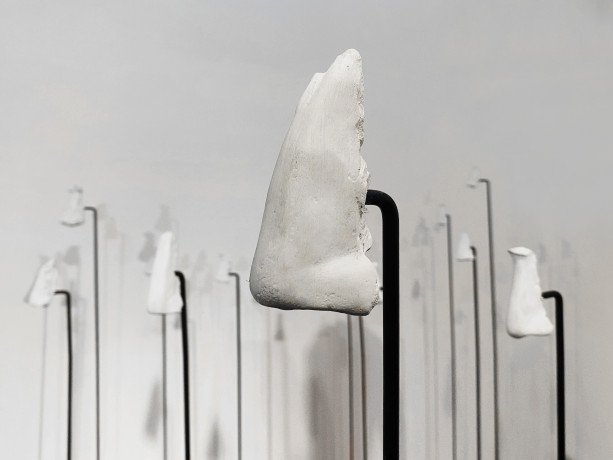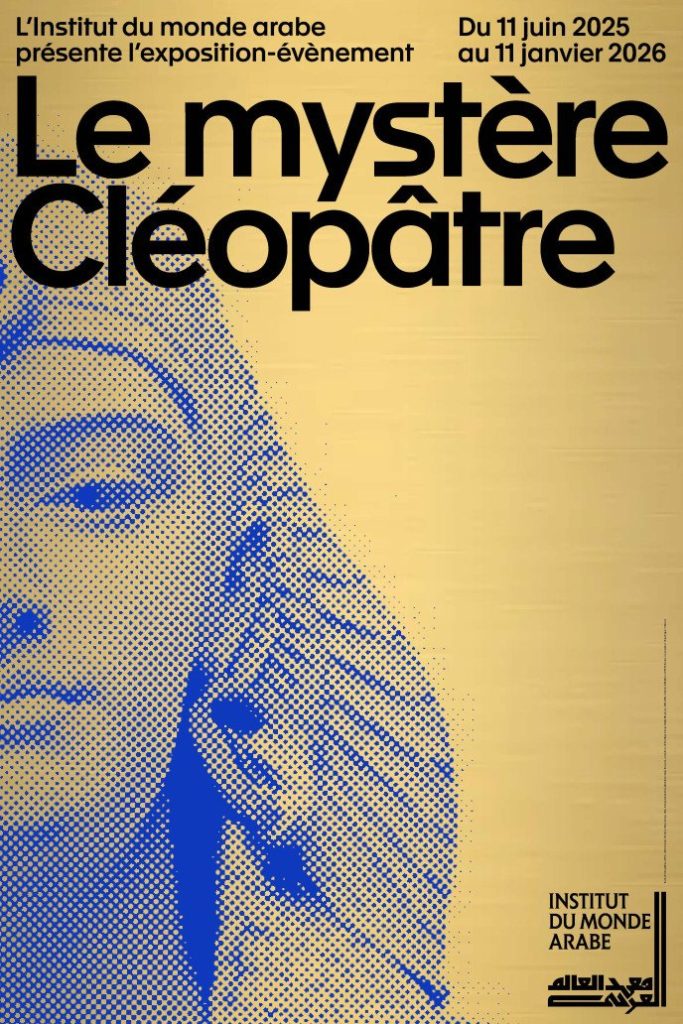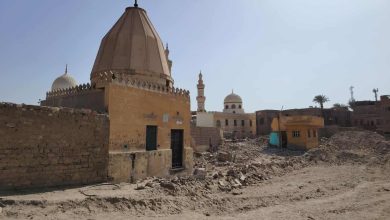An exhibition in Paris reimagines Cleopatra, far from Western narratives

The “Cleopatra: The Mystery” exhibition, organized by the Arab World Institute, will continue in Paris until January 11, 2026. The exhibition aims to present a new interpretation of the history of Queen Cleopatra VII by correcting misconceptions and stereotypes that have been associated with her over the centuries. The exhibition is not limited to displaying statues and paintings, but also presents a comprehensive historical and cultural narrative that responds to Western artistic works, including the Netflix series that sparked widespread controversy when it was released two years ago.
The mystery of Cleopatra
The exhibition is being held to mark the 2054th anniversary of the death of Queen Cleopatra (69 BC – 30 BC), the last queen of the Ptolemaic dynasty. It sheds new light on her as one of the most influential women in ancient history. She faced Roman expansion and remains a symbol of strength and political savvy to this day.
The exhibition highlights how her short life, which ended tragically at the age of 39, has become an endless source of inspiration for literature, art, and cinema. This is especially true given the lack of a documented biography. Instead, her personal life has been constantly distorted. She has been reduced to her relationship with Julius Caesar and Mark Antony, at the expense of her political and cultural achievements.
Contemporary attempts have not been far from this distortion. The Netflix series Cleopatra, released in 2023, sparked widespread controversy due to what was considered a distortion of historical facts, which the exhibition highlights. According to the official website of the Arab World Institute: “The Cleopatra exhibition seeks to distinguish between fact and myth. Through a journey that connects the distant past with contemporary representations, science and art collaborate to reconstruct a more accurate and fair image of the Egyptian queen.“

History and Myth
The exhibition is accompanied by a book, ”The Mystery of Cleopatra,” which looks at how Queen Cleopatra’s life became a legend shrouded in mystery.
The exhibition features paintings, sculptures, prints, manuscripts, artifacts, jewelry, coins, costumes, visual displays, and photographs from various museum collections, including the Louvre, the National Library, and the Palace of Versailles. In addition to museums in France, Spain, the United States, Italy, and Switzerland.
The exhibition is divided into two main themes: “History” and “Myth,” using the latest historical and archaeological research. The aim is to reestablish the facts about Queen Cleopatra VII and decipher the cultural phenomenon surrounding her. The first section displays artifacts, jewelry, inscriptions, sculptures, and religious texts dating back to the reign of Cleopatra VII. The Arab World Institute analyzes the information about her provided by the West, as well as what has been written by Arab historians.
The institute has noted the contrast between the Western and Arab views of the queen. According to the official website: “These are two completely different narratives that do not portray the queen in the same way. On the one hand, she is presented as a seductive queen, and on the other, as an educated woman, a great architect, and a protector of her people.”
A journey with different faces
The “Cleopatra: The Mystery” exhibition takes visitors on a tour through four sections highlighting the life of the Egyptian queen. At the beginning, visitors are greeted by a dramatic statue entitled “Cleopatra Dying Standing” by French artist Jean-Baptiste Joy (17th century).
It sets the scene for a visual and scenographic experience that reveals the many faces of the enigmatic queen.
In the second section, visitors are transported into the world of artistic and literary representations that have preserved Cleopatra’s aura. These include the painting “The Death of Cleopatra” by Jean-André Roquencourt (1874), which depicts the moment of her death in a dramatically striking manner. The third section takes us into the world of cinema, which contributed to Cleopatra’s transformation into a global icon. It begins with a short film directed by Georges Méliès in 1899. It continues with iconic legacies such as the luxurious dress worn by Elizabeth Taylor in Joseph L. Mankiewicz’s film “Cleopatra” (1963), which cemented the Hollywood image of the queen.
The exhibition concludes with works by contemporary artists who draw inspiration from Cleopatra and reinterpret her with a modern vision. Among the highlights is a collection of advertising pieces covered in Swarovski crystals. They combine modern luxury with the historical symbolism of the queen who continues to capture the imagination to this day.

Cleopatra’s nose: a historical symbol
In one of the rooms of the “Cleopatra’s Mystery” exhibition, a strange art installation is on display: dozens of noses hanging from the ceiling. Next to this curious work is an exhibition of rare bronze coins minted in Alexandria and Cyprus. They show Cleopatra with an elongated face, a rounded forehead, and a prominent nose. This is one of her most controversial physical features.
Egyptologist Christiane Ziegler, former honorary director of the Egyptian antiquities department at the Louvre, comments: “We don’t know much about Cleopatra’s appearance. There are very few authentic images. There are no statues bearing her name directly, but some are attributed to her.“
The focus on Cleopatra’s nose also has a literary basis. The philosopher Blaise Pascal wrote in his ‘Pensées’: ”Cleopatra’s nose: if it had been shorter, the whole world would have been changed.” This is a symbolic reference to the influence of her beauty on the course of history, particularly in her relationship with Julius Caesar and Mark Antony. The exhibition does not stop at presenting the past, but allows visitors to use artificial intelligence to create an imaginary image of Cleopatra. The result is a woman with captivating features that combine charm and mystery.
The beauty of Cleopatra
The name Queen Cleopatra has always been associated with beauty and seduction. But the truth, as the exhibition reveals, seems more complex than this stereotype. According to the French website “Surtra Paris,” Claude Mulard, the exhibition’s curator, believes that “the story of Cleopatra’s beauty is largely fictional.” He insists that she was not the “vulgar” woman that the Roman emperor Augustus tried to portray her as for political reasons.
Academic Christian Georg Schwentzel asserts that ancient perceptions of Cleopatra ranged from being a “fascinating woman” at best. At worst, she was “sensual.” He points out that some extreme accounts portrayed her as moody, sleeping with her slaves and then ordering them to be killed in the morning, an image that Schwertzel describes as the product of deliberate exaggeration.
In one of the exhibits, an oil lamp is displayed with an alleged image of Cleopatra sitting in a provocative pose. However, Schwertzel believes that this example, and others like it, represent “exaggerated criticism.” He explains that most of the stories about her were written by men in a patriarchal and misogynistic Roman society.

Cleopatra, a feminist icon
The promotion of Queen Cleopatra in such stereotypical and biased images dates back to the 19th century, during the Western obsession with Egyptian civilization.
According to the French website Twenty Minutes, since 1899, more than 220 works of art, from films and TV series to parodies, have portrayed the Egyptian queen in a single stereotypical image. This image was often a mixture of seduction and mystery, at the expense of her true identity as a skilled political leader.
“Many of these images perpetuated misconceptions about Cleopatra,” says Schwertz. “They distanced her from her true identity as a powerful and influential woman. They not only tarnished her reputation as a woman, but also as a representative of all women who held power in a world that refused to see women in positions of power.”
Read also
Wars of metaphor: Was Cleopatra black?
Art auction to support Darb 1718 after its headquarters were demolished: Artists give back





Hi, this is a comment.
To get started with moderating, editing, and deleting comments, please visit the Comments screen in the dashboard.
Your article helped me a lot, is there any more related content? Thanks!
Can you be more specific about the content of your article? After reading it, I still have some doubts. Hope you can help me.
Your article helped me a lot, is there any more related content? Thanks!
Your point of view caught my eye and was very interesting. Thanks. I have a question for you.